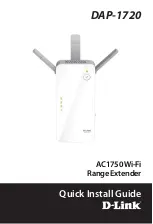
2-3
Selecting the Installation Location
You can place the RoamAbout R1 in any convenient location, complying with the site
requirements and the following:
•
Keep the RoamAbout R1 away from heating devices
•
Do not place the RoamAbout R1 in a dusty or wet environment.
Refer to for
Appendix A,
for cable and port-pin assignments.
Installation
This section describes how to connect devices to the RoamAbout R1.
1.
Connect to the LAN:
a.
Wired: You can connect the RoamAbout R1 to a computer, hub, or a switch. Run
the Ethernet cable from one of the LAN ports on the back panel of the
RoamAbout R1 to the computer ‘s network adapter or to another device. Connect
computers directly into the RoamAbout R1 LAN ports 1 to 3 on the back panel.
If you have more than three computers to connect with cables, connect a hub or
a switch (using its uplink port) to one of the ports. Then connect additional
computers to that device.
b.
Wireless: You can connect the RoamAbout R1 to your PC using a PC Card.
Position both antennas on the back of the RoamAbout R1 into the desired
positions. For more effective coverage, position one antenna along the vertical
axis and the other along the horizontal axis. The antennas provide more effective
coverage when positioned along alternate axes. Ensure that the computer is
within radio range of the RoamAbout R1.
2.
Connect to the WAN: Prepare the Ethernet cable for connecting the RoamAbout R1
to a cable/xDSL modem or Ethernet Router. Prepare a serial cable for connecting the
RoamAbout R1 to an ISDN TA or PSTN modem.
a.
Connect your cable, ASDL/xDSL modem, to the WAN port on the back panel.
•
Do not apply power to the RoamAbout R1 until instructed to do so.
•
Do not plug a phone jack connector into any RJ-45 port. This may damage
the RoamAbout R1. Use only twisted-pair cables with RJ-45 connectors
that conform with FCC standards.
NOTE
•
Use 100-ohm shielded or unshielded twisted-pair cable with RJ-45
connectors for all connections. Use category 3,4, or 5 for connections that
operate at 100 Mbps.
•
Make sure each twisted-pair cable does not exceed 100 meters (328 feet)
















































